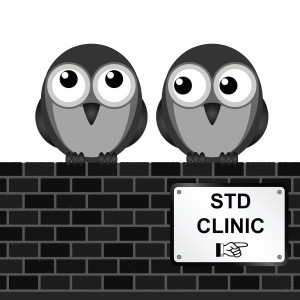 Moving away from Sex Ed in the Digital Age, but staying with our week’s theme on how to encourage intergenerational conversations about sexuality education, we are picking up a lesson from Teaching Safer Sex. Regardless of the age of the participants in this lesson plan, they get to have a really good conversation about responsibility.
Moving away from Sex Ed in the Digital Age, but staying with our week’s theme on how to encourage intergenerational conversations about sexuality education, we are picking up a lesson from Teaching Safer Sex. Regardless of the age of the participants in this lesson plan, they get to have a really good conversation about responsibility.
IT TAKES A VILLAGE
Prevention Is Everybody’s Business
Objectives
By the end of this lesson, participants will be able to:
- Evaluate alternative strategies for stemming the spread of sexually transmitted infections (STIs).
- Identify ways adults need to communicate with young people about safer sex.
Rationale
A strong element of shame and guilt surrounds the issue of STIs. Punitive moral judgments may interfere with confronting these infections as a community health problem, while negative feelings discourage the communication between partners that is essential for reducing the risk of infection transmission. This lesson explores the idea that young people who do not practice safer sex are not the only ones responsible for transmission of infection. Parents, teachers and public officials who fail to educate young people in ways that would enable them to overcome the barriers to effective infection prevention are also responsible. Silence, both public and private, is dangerous. Everyone needs to speak up for safer sex.
The bulk of this lesson plan is a story in which a young person ends up passing on a STI to a sexual partner. There are a number of missed opportunities for conversation: between the main protagonist and her first love, her first sexual partner, and then her subsequent partner, for example. But the lack of information in her sex education class at school is also highlighted, due to local laws that focus on abstinence rather than comprehensive sexuality education, and a sex ed teacher who is uncomfortable with the topic. The protagonist’s mother has an appearance too, in which she brushes off a conversation about teens with STIs. Without access to information, is it the protagonist’s fault that she contracted and spread one?
This is a great scenario for adults in all kinds of roles and for youth to consider. What are our village’s responsibilities when it comes to sexuality education, sexual health care, and sexual decision-making? That everyone, from teenagers to parents, and teachers and lawmakers, has some element of responsibility in the education of youth is an important piece for everyone to learn about.






